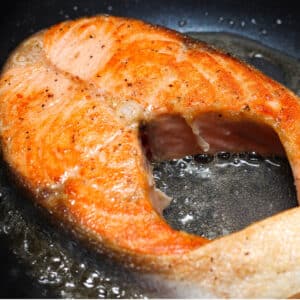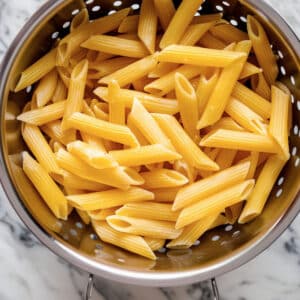Don't let mistakes to avoid when reheating salmon ruin your leftovers! Sure, it might not be quite as amazing as the first time around, but with the right approach, it can still be a delicious and satisfying meal. Forget dry, rubbery leftovers – let's talk about how to reheat your salmon the right way.
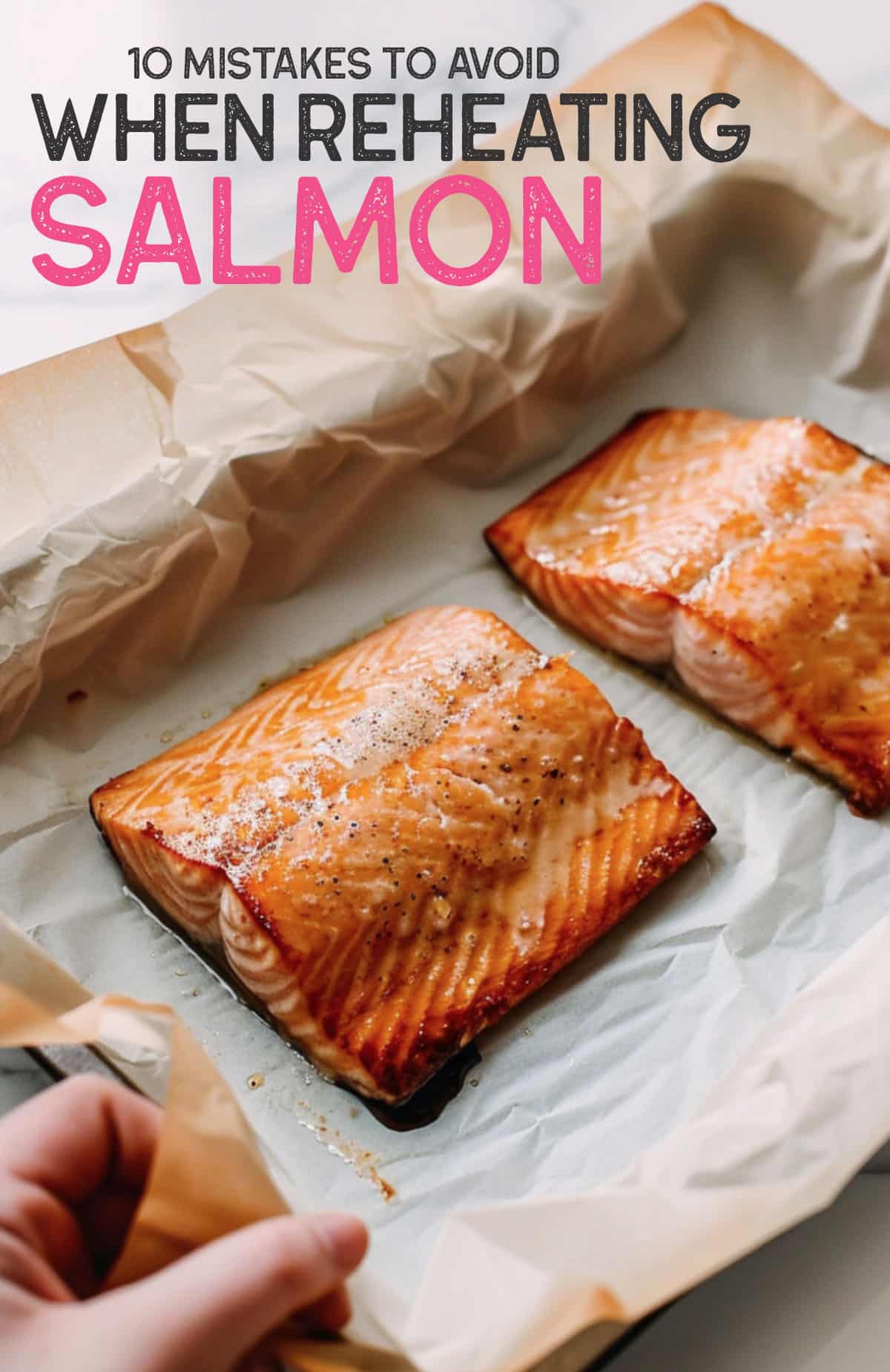
10 Mistakes to Avoid when Reheating Salmon
1 Reheating at Too High of a Temperature
The Problem: Overcooked salmon is the ultimate tragedy! It becomes dry, tough, loses its delicate flakiness, and the delicious flavors fade away.
The Fix: Opt for gentle heat – a low oven temperature (around 275°F/135°C), a quick warm-up on the stovetop over medium-low heat, or short bursts in the air fryer will ensure tender, delicious results.
- Salmon is primarily composed of muscle tissue, containing proteins like myosin and actin. High temperatures cause these proteins to denature and stiffen, resulting in a tough, dry texture.
- Moisture Loss: High heat also accelerates moisture evaporation. Salmon's delicate fat melts and leaks out, leaving the fish dry and flavorless.
2 Not Covering (When Needed)
The Problem: Especially when using the oven, leaving your salmon uncovered during reheating can result in a dry, less-than-appetizing result.
The Fix: Loosely cover the salmon with foil to trap some steam. This helps keep those fillets tender and juicy.
Explanation: Exposure to open air promotes moisture evaporation. Without a cover to trap steam, the salmon loses moisture through surface area contact with the hot air.
3 Expecting It To Be as Good as the Original Fillet
The Problem: While reheating salmon carefully can yield excellent results, it's important to manage your expectations – it won't be exactly the same experience as the first time you enjoyed it.
The Fix: Manage your expectations! Reheated salmon offers a slightly different texture, but that doesn't mean it can't still be a delicious part of your meal.
4 Reheating Straight from the Fridge
The Problem: Tossing cold salmon straight into the oven or onto the stovetop increases the risk of uneven cooking and accidentally overcooking the outer portions before the center warms through.
The Fix: Let your salmon rest at room temperature for 10-15 minutes before reheating. This helps ensure a perfectly warmed center without sacrificing texture.
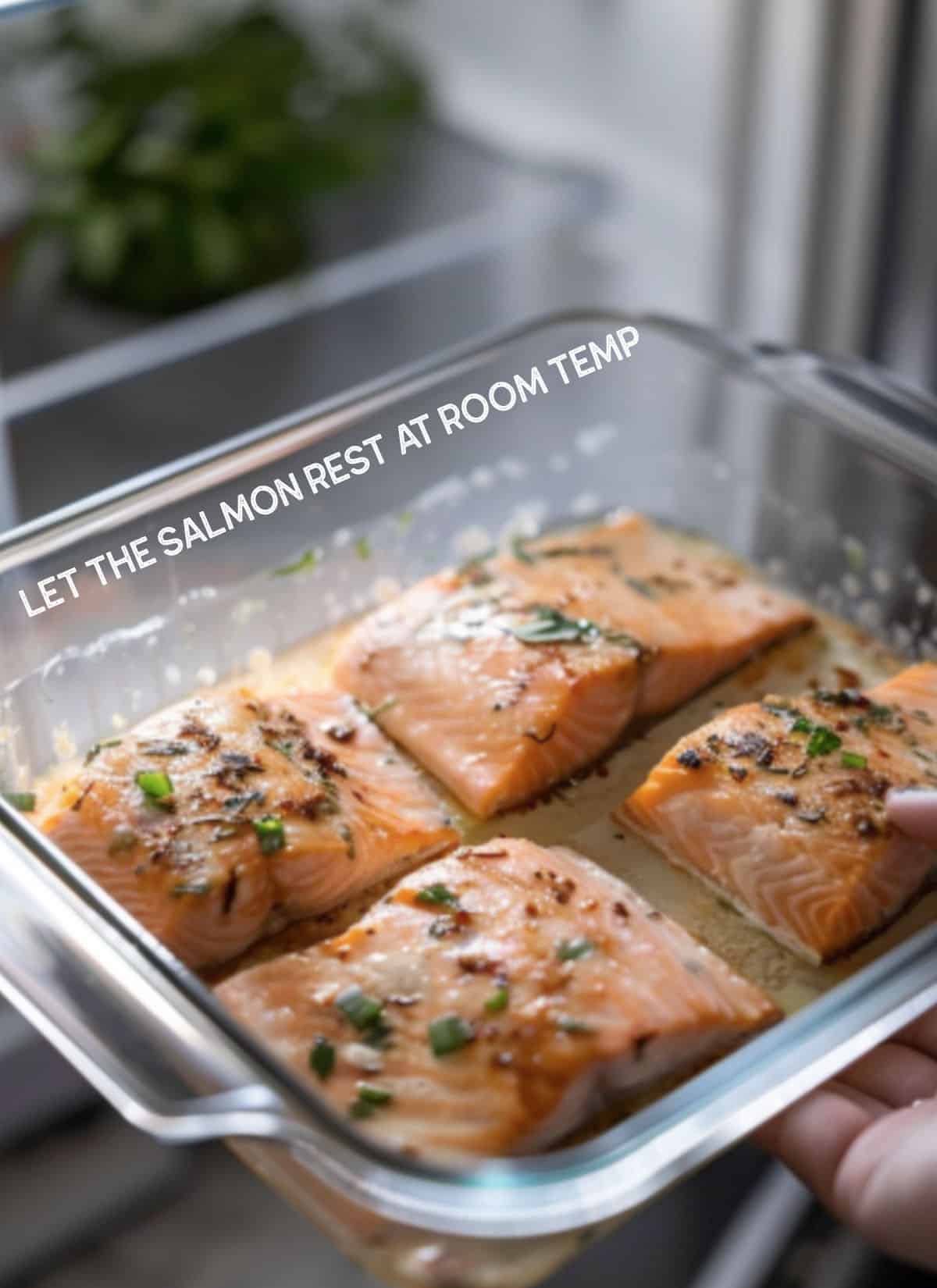
Explanation: The temperature difference between the cold center and the hot cooking environment creates an uneven heat distribution. The outer portions cook quickly as they reach high temperatures, while the center remains cold and requires extended cooking, increasing the risk of overcooking the outer parts.
5 Not Adding Back Moisture or Reviving the Glaze
The Problem: Original glazes can dry out during storage. If your original salmon had a beautiful glaze, reheating can dull its shine and diminish the flavor.
The Fix: A few simple tricks bring it back to life!
- Brush with any leftover glaze from the original cooking. If there's no glaze left, or you're starting with plain cooked salmon, a drizzle of teriyaki sauce adds fantastic flavor during reheating.
- Add a splash of water or broth for extra moisture.
- Drizzle a bit of olive oil for both shine and to help prevent sticking.
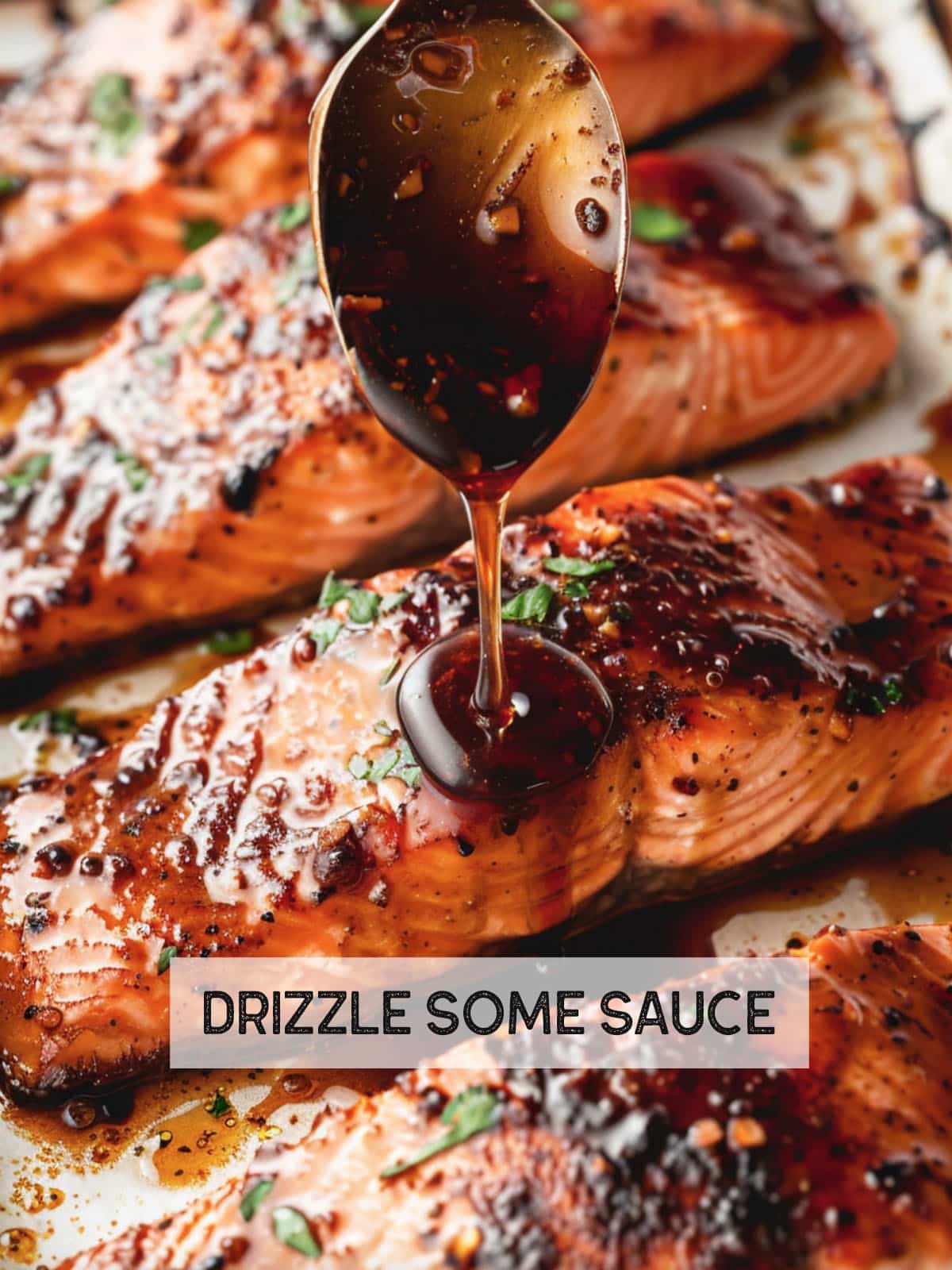
Water's Role: Water replenishes lost moisture through vaporization, keeping the salmon hydrated during reheating.
Glaze Revival: Adding a splash of water or broth to glazes helps them loosen and regain their original consistency and flavor.
6 Forgetting About the Skin
The Problem: Reheating can turn that once-crispy skin soggy.
The Fix: If your salmon has the skin, reheat it skin-side down in a skillet for maximum crispiness. Finish with a quick blast under the broiler for extra crunch (but watch it closely to avoid burning!).
- Explanation: Salmon skin has a layer of fat, which helps it crisp up during initial cooking. Reheating, especially in moist environments (covered in foil, etc.) softens this layer instead of re-crisping it.
- Solution Focus: High, direct heat is essential for re-crisping salmon skin. The broiler or a hot pan help to render and evaporate that moisture quickly, creating crispness.
7 Microwaving Without a Plan
The Problem: Microwaves are notorious for drying out fish, making the glaze rubbery, and causing uneven heating.
The Fix: If it's your only option, use a cover, set it to 30-40% power, and reheat in 30-seconds short bursts, checking often. While convenient, microwaves should be a last resort for reheating salmon. The oven, stovetop, or air fryer yield far superior texture and flavor.
- Uneven Heating: Microwaves heat food through the excitation of water molecules. This process can lead to uneven heating patterns, with hot spots and cold areas within the fish.
- Protein Toughening: Exposure to hot spots in the microwave can cause protein overcooking, similar to high heat cooking on the stovetop or oven.
8 Ignoring Visual Cues
The Problem: Thermometers aren't always reliable with small portions of salmon.
The Fix: Look for a gently warmed center, slightly opaque edges, and a flake that separates easily with a fork.
- Explanation: While helpful guidelines, cooking times and internal temperature targets offer a range, not an absolute. Salmon cooks quickly, and variations in ovens, pans, and portion size all impact the speed of reheating.
9 Overcrowding the Pan
The Problem: Too many salmon pieces in the pan lowers the temperature and can lead to uneven cooking, steaming, and a less desirable texture.
The Fix: When reheating multiple portions, work in batches to ensure enough space and optimal heat for each piece.
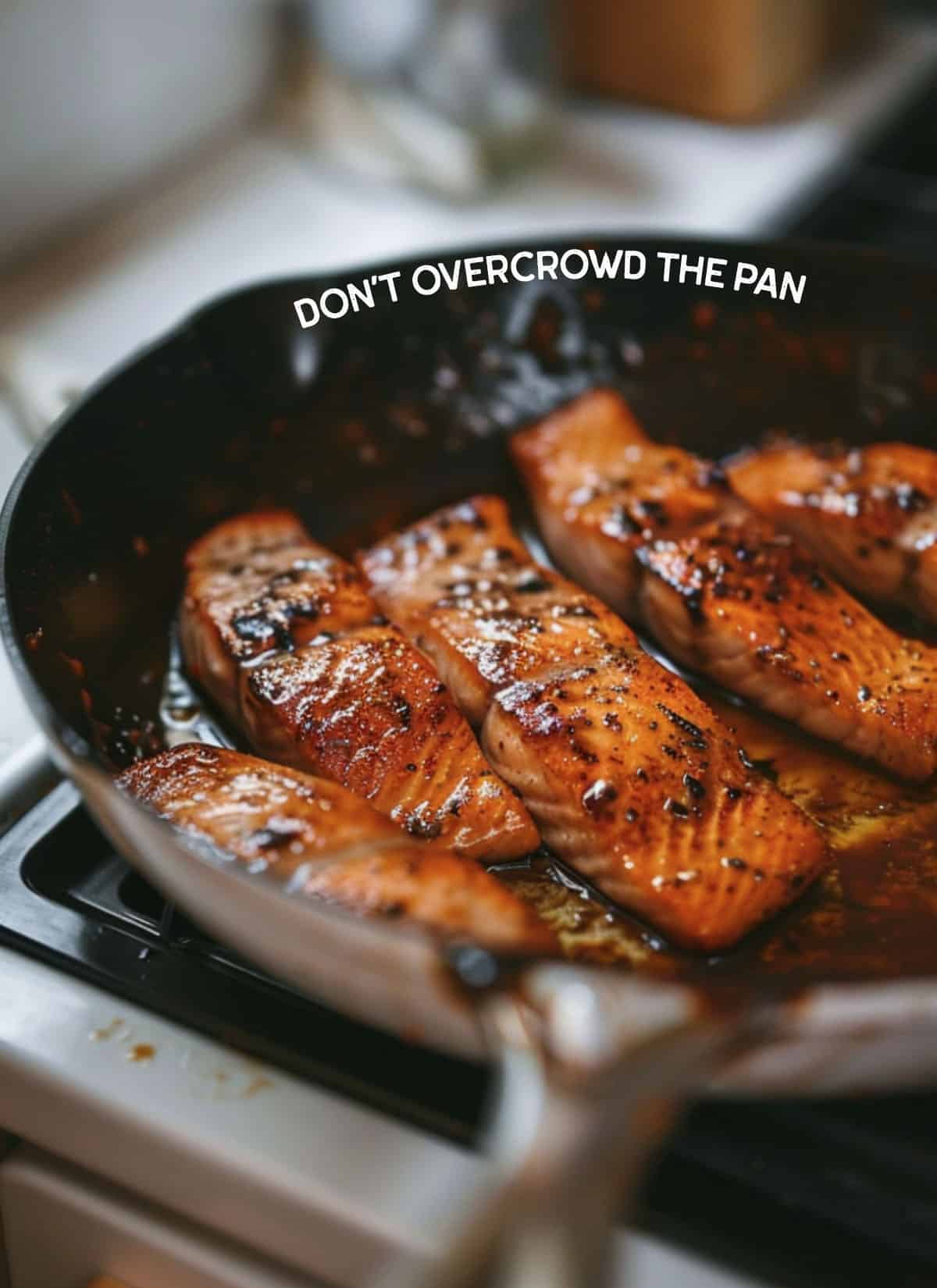
- Explanation:
- Heat Transfer: When you add food to a hot pan, the initial contact causes a drop in temperature. The pan needs time to recover (reabsorb heat) for effective cooking. Overcrowding slows down this recovery process significantly.
- Maillard Reaction (Browning): The Maillard reaction, crucial for delicious browning and caramelization, requires high direct heat contact with the pan. In an overcrowded pan, you don't have sufficient surface area for this reaction to happen properly.
- Steaming vs. Searing: Instead of a crispy sear, the salmon releases moisture that has nowhere to evaporate with other pieces in the way. This creates a steaming effect, leading to a softer texture and no caramelized flavor.
10 Giving Up on Leftovers
Problem: It's easy to get discouraged when leftover salmon ends up dry, rubbery, and lacking the deliciousness of the original meal. This leads to food waste and a missed opportunity for tasty, easy meals later in the week.
The Fix: Think Beyond "Just Reheated"! Leftover salmon doesn't have to be a sad copy of its former self. By incorporating it into new dishes, you unlock its full potential. Here's why it works:
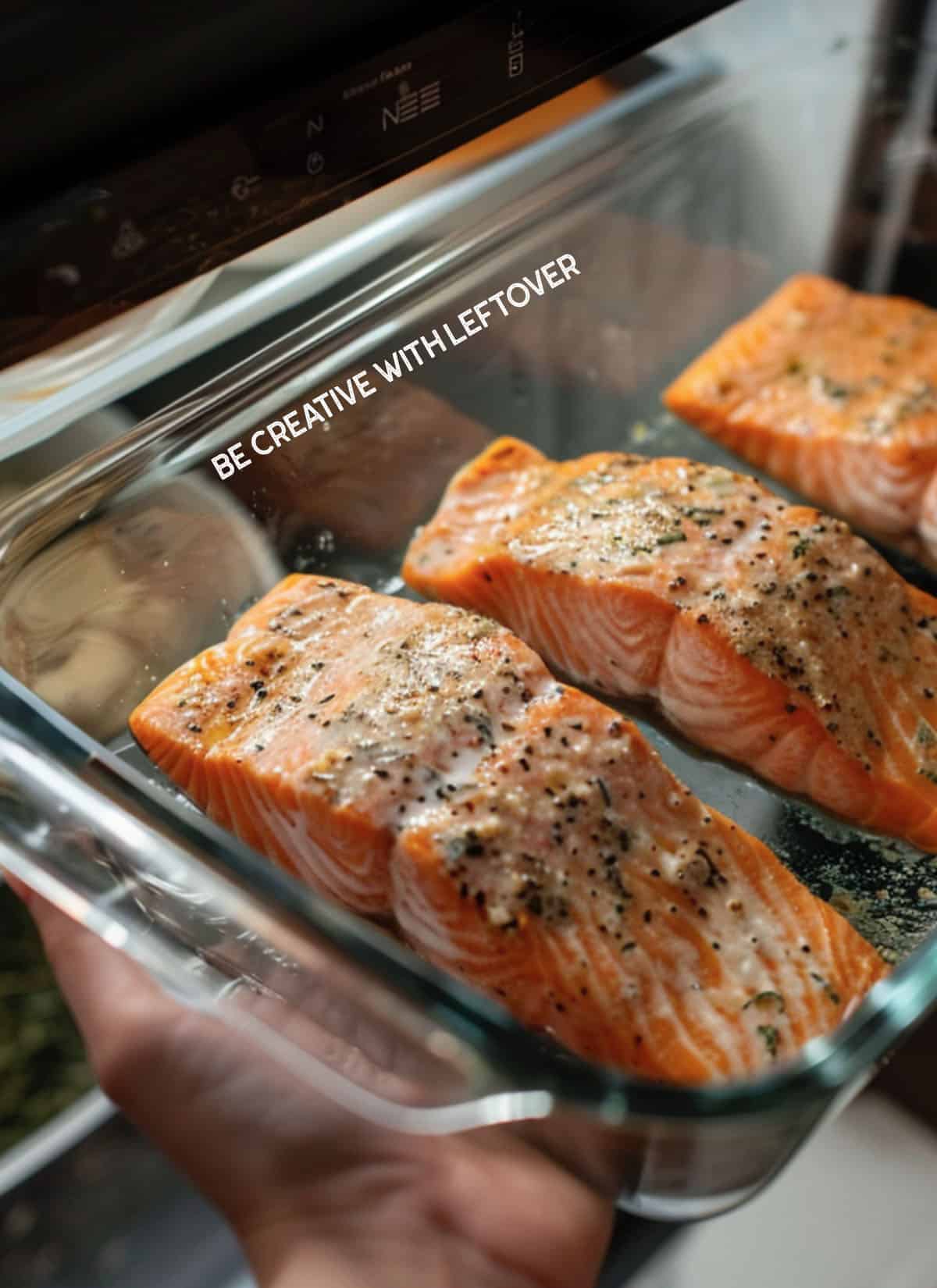
- Change of Texture: Flaking cooked salmon eliminates the need to worry about perfect doneness or avoiding dryness the same way you do with reheated fillets.
- Flavor Integration: Leftover salmon adds fantastic base protein to salads, pasta dishes, etc. Its flavor melds beautifully with other ingredients, sauces, and dressings.
- Time Saver: Cooked salmon is ready to go! This makes it perfect for quick lunches or dinners when you're short on time.
Ideas to Spark Inspiration:
- Salmon Salad Upgrade: Toss flaked salmon with your favorite salad ingredients – think Mediterranean style with olives and feta, or an Asian-inspired version with chopped veggies and a ginger-soy dressing.
- Creamy Pasta Delight: Flaked salmon pairs beautifully with creamy sauces and cooked pasta for a luxurious yet simple meal.
- Taco Time: Give your usual tacos a tasty twist! Shredded salmon works wonders with classic taco toppings or a spicy mango salsa.
- Flavorful Fried Rice: Add flaked salmon to your fried rice recipe for a boost of protein and savory flavor.

